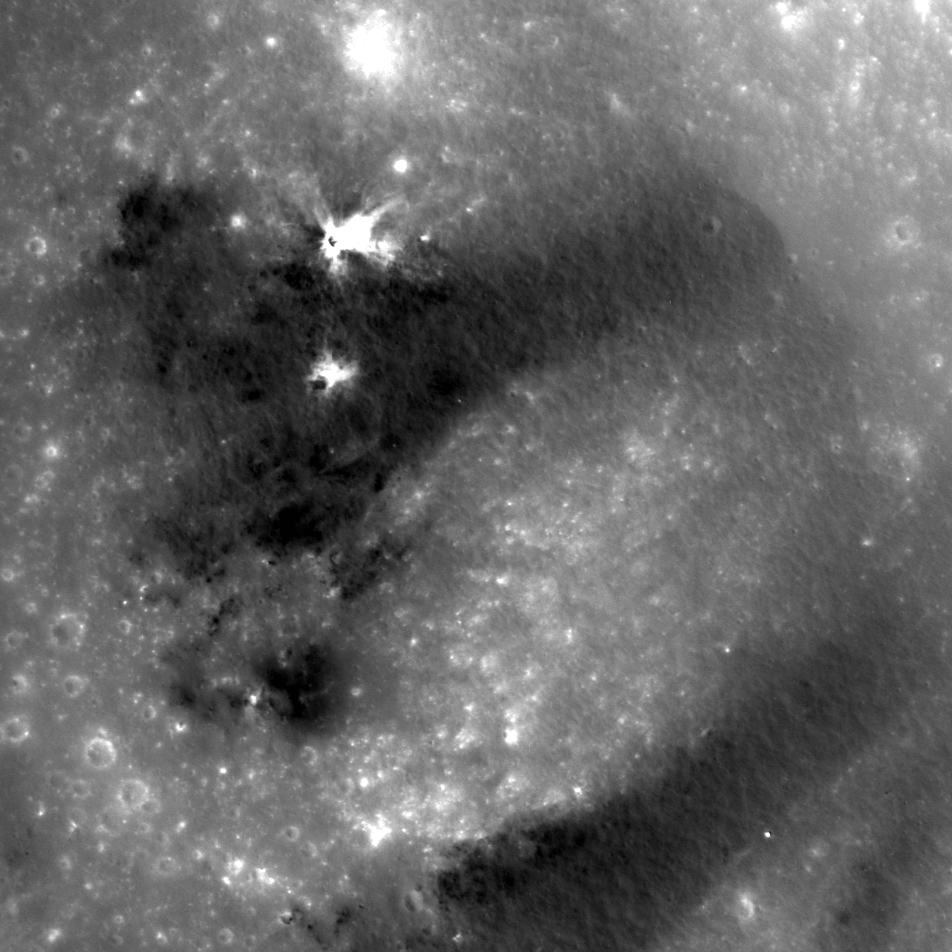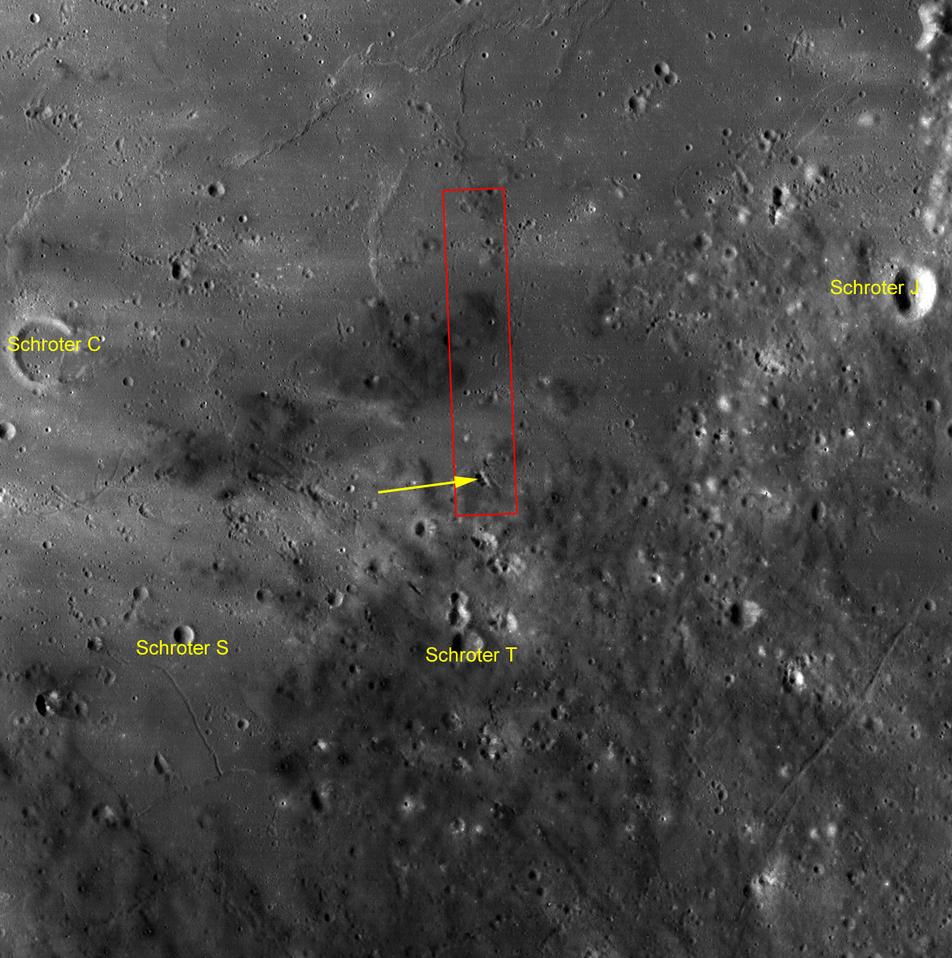Striped Crater (original) (raw)

Dark mantle deposits decorate a crater wall. Slowly pulled downhill by gravity, the volcanic glasses that compose these stripes where formed during explosive volcanic eruptions on the Moon. The scene is 952m wide from NAC image M1101259668L; north is up [NASA/GSFC/Arizona State University].
Today's Featured Image location is in southern Sinus Aestuum. Low reflectance pyroclastic material flowed downslope (NE) due to mass wasting in this crater, and high reflectance fresh ray material from small young craters dot the streaks. The high reflectance material from small craters on top of the pyroclastics indicate that the pyroclastic deposit is relatively thin, because the excavated material is from a maximum of about 0.2 crater radii below the surface.
In addition to the thickness of the deposit, scientists can also tell that this deposit is most likely discontinuous by observing the streaks in the larger crater. If there was a continuous blanket of material on the surface, the dark mantle material would not form streaks, but a sheet of dark material as it is eroded away.

LROC WAC basemap showing context around the Featured Image (red box shows whole NAC footprint), center of Featured Image location is indicated with the yellow arrow [NASA/GSFC/Arizona State University].
Dark mantle deposits on the Moon are composed of red, green, orange, and black glasses and crystals that were formed during strombolian or vulcanian eruptions. Sinus Aestuum is littered with dark mantle deposits, showing there were many different vents that were sending magma aloft. The crater in which we see the dark streaks in the Featured Image could have been the source for the streaks; a piece of evidence for the crater being a vent is its irregular shape, but without further surface investigation (perhaps by humans one day) that question can not be answered for certain.
See how many dark mantle deposits you can find in the full NAC frame below!
Related Posts:
Published by Aaron Boyd on 25 August 2014